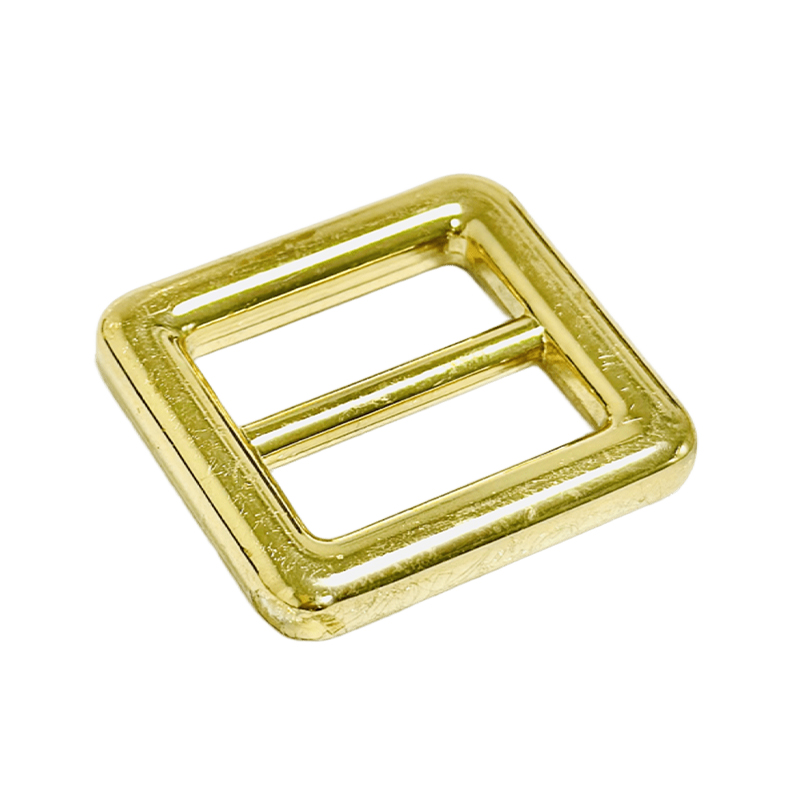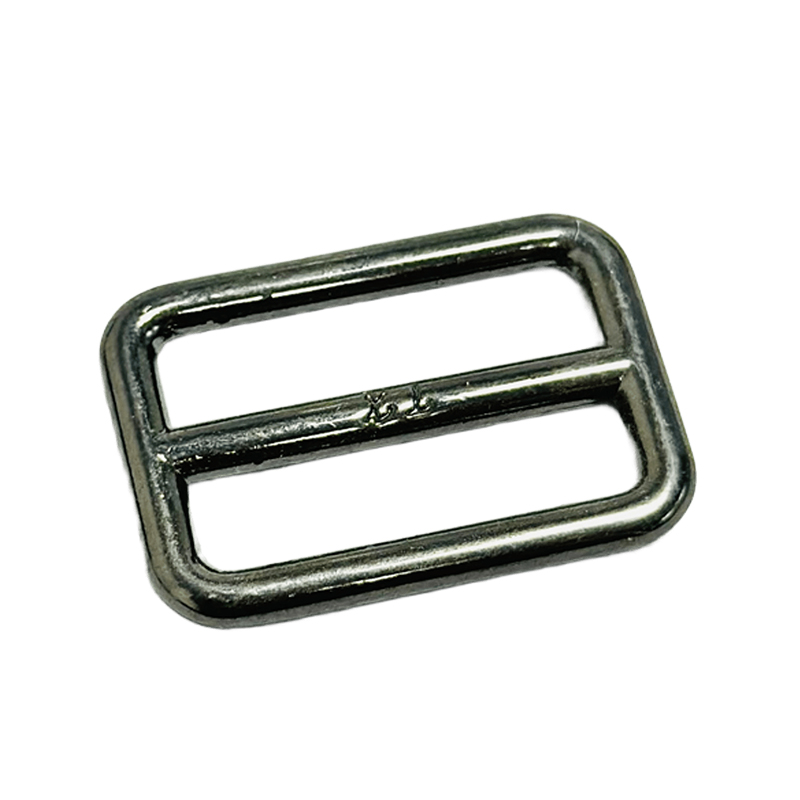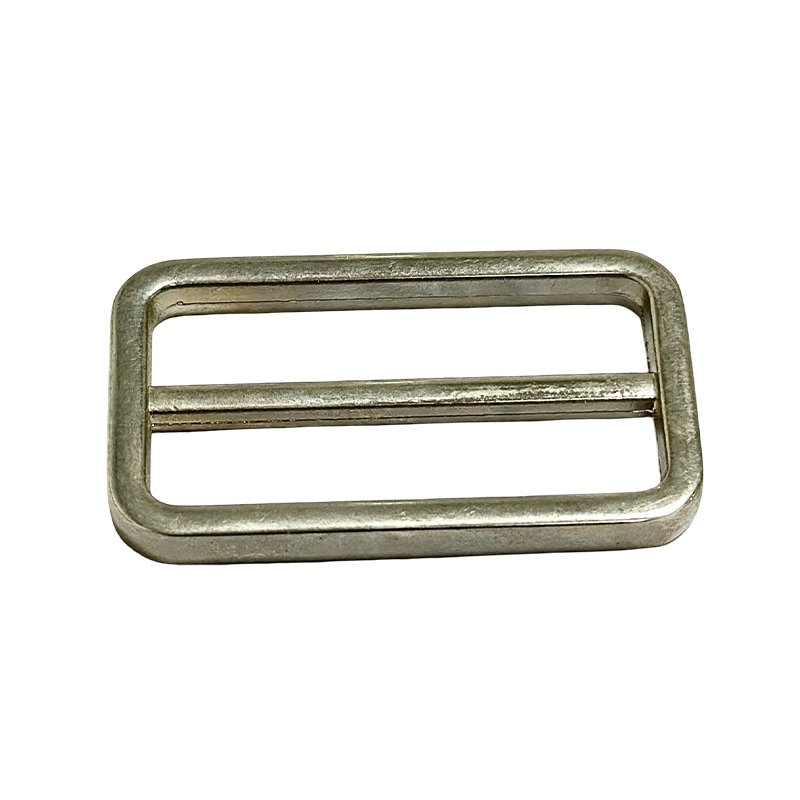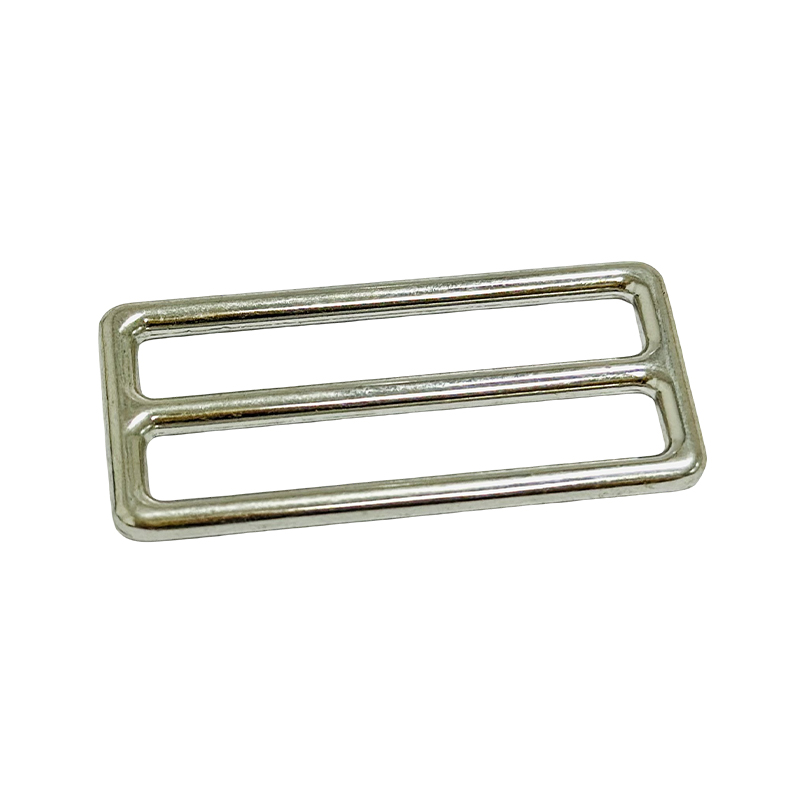Does the Japanese buckle offer good wear resistance in scenarios where it's frequently adjusted?
Release Time : 2025-08-26
As a core component for adjusting and securing the length of the webbing in bags, backpacks, pet carriers, and various sports equipment, the Japanese buckle is often at the forefront of frequent operations. Whether a climber adjusts the tension of the shoulder strap while on the move, a cyclist fine-tunes the position of the chest strap during travel, or a pet owner repeatedly opens and closes a harness for their dog, the Japanese buckle must remain stable and reliable through repeated sliding, pressing, and locking. In such frequent adjustments, its wear resistance directly determines its service life and the overall safety of the equipment.
The Japanese buckle's wear resistance stems primarily from its rational structural design. Its core mechanism relies on the interaction between an internal slider and the webbing. Pressing the slider releases the webbing, allowing it to be freely extended and automatically locked when released. This process requires smooth sliding between the slider and the internal channel of the buckle body, while preventing gap expansion or surface wear caused by long-term friction. High-quality Japanese buckles are designed with optimized friction paths in mind, ensuring even force distribution and avoiding localized stress concentrations. The slider edges are rounded to minimize scratching on the webbing surface and reduce wear from repeated movement.
Material selection is a key factor in determining wear resistance. Common Japanese buckles are often made of high-strength engineering plastics, such as polyoxymethylene (POM) or reinforced nylon. These materials not only offer excellent mechanical strength and impact resistance, but also a low coefficient of friction and high wear resistance. POM's smooth surface and excellent self-lubrication ensure a smooth, long-lasting feel even without additional lubrication. Nylon, with its dense molecular structure, offers excellent fatigue resistance and can withstand thousands of opening and closing cycles without structural damage. These materials are injection-molded with extreme precision, ensuring consistent dimensions and a tight fit for each component, further minimizing wear caused by loosening or misalignment.
In actual use, the Japanese buckle's wear resistance is also reflected in its protective properties against webbing. Frequent adjustment can cause burrs or sharp edges inside the buckle, accelerating wear and tear. They can also damage the webbing fibers, causing fuzz and breakage. High-quality Japanese buckles are meticulously polished before shipment, ensuring smooth, flawless contact surfaces. This ensures that long-term use will not cut or abrade the webbing. Furthermore, the buckle's internal structure incorporates guide grooves to guide the webbing along a fixed path, preventing misalignment and friction, and extending the lifespan of both the webbing and the buckle.
Environmental factors also pose challenges to wear resistance. During outdoor use, impurities such as sand, dust, rain, and mud can enter the buckle, forming abrasive particles and exacerbating wear. To address this, some high-end Japanese buckles incorporate dust-proof features, such as sealed slides or drainage holes, to both drain moisture and prevent the accumulation of fine particles. Metal components, such as springs, are treated with rust-proofing to prevent corrosion-induced lag or seizure, ensuring smooth operation even in challenging environments.
The durability of the Japanese buckle is also reflected in its resistance to aging. Long-term exposure to sunlight and ultraviolet rays can embrittle plastic, compromising its structural integrity. High-quality products use UV-resistant materials or incorporate stabilizers to slow the aging process and maintain toughness and strength over time. Even in low-temperature environments, the material maintains a certain degree of elasticity and avoids cracking due to brittleness.
In summary, the Japanese Buckle demonstrates excellent wear resistance despite frequent adjustments thanks to its scientific structural design, high-performance materials, and meticulous manufacturing process. Not only is it inherently durable, it also effectively protects the webbing and ensures long-term stability in adjustment. This reliability makes it an indispensable detail in a wide range of functional equipment, silently supporting every adjustment and ensuring user comfort and safety.
The Japanese buckle's wear resistance stems primarily from its rational structural design. Its core mechanism relies on the interaction between an internal slider and the webbing. Pressing the slider releases the webbing, allowing it to be freely extended and automatically locked when released. This process requires smooth sliding between the slider and the internal channel of the buckle body, while preventing gap expansion or surface wear caused by long-term friction. High-quality Japanese buckles are designed with optimized friction paths in mind, ensuring even force distribution and avoiding localized stress concentrations. The slider edges are rounded to minimize scratching on the webbing surface and reduce wear from repeated movement.
Material selection is a key factor in determining wear resistance. Common Japanese buckles are often made of high-strength engineering plastics, such as polyoxymethylene (POM) or reinforced nylon. These materials not only offer excellent mechanical strength and impact resistance, but also a low coefficient of friction and high wear resistance. POM's smooth surface and excellent self-lubrication ensure a smooth, long-lasting feel even without additional lubrication. Nylon, with its dense molecular structure, offers excellent fatigue resistance and can withstand thousands of opening and closing cycles without structural damage. These materials are injection-molded with extreme precision, ensuring consistent dimensions and a tight fit for each component, further minimizing wear caused by loosening or misalignment.
In actual use, the Japanese buckle's wear resistance is also reflected in its protective properties against webbing. Frequent adjustment can cause burrs or sharp edges inside the buckle, accelerating wear and tear. They can also damage the webbing fibers, causing fuzz and breakage. High-quality Japanese buckles are meticulously polished before shipment, ensuring smooth, flawless contact surfaces. This ensures that long-term use will not cut or abrade the webbing. Furthermore, the buckle's internal structure incorporates guide grooves to guide the webbing along a fixed path, preventing misalignment and friction, and extending the lifespan of both the webbing and the buckle.
Environmental factors also pose challenges to wear resistance. During outdoor use, impurities such as sand, dust, rain, and mud can enter the buckle, forming abrasive particles and exacerbating wear. To address this, some high-end Japanese buckles incorporate dust-proof features, such as sealed slides or drainage holes, to both drain moisture and prevent the accumulation of fine particles. Metal components, such as springs, are treated with rust-proofing to prevent corrosion-induced lag or seizure, ensuring smooth operation even in challenging environments.
The durability of the Japanese buckle is also reflected in its resistance to aging. Long-term exposure to sunlight and ultraviolet rays can embrittle plastic, compromising its structural integrity. High-quality products use UV-resistant materials or incorporate stabilizers to slow the aging process and maintain toughness and strength over time. Even in low-temperature environments, the material maintains a certain degree of elasticity and avoids cracking due to brittleness.
In summary, the Japanese Buckle demonstrates excellent wear resistance despite frequent adjustments thanks to its scientific structural design, high-performance materials, and meticulous manufacturing process. Not only is it inherently durable, it also effectively protects the webbing and ensures long-term stability in adjustment. This reliability makes it an indispensable detail in a wide range of functional equipment, silently supporting every adjustment and ensuring user comfort and safety.







